"WELL HELLO! GREETINGS FROM THE FORREST!"
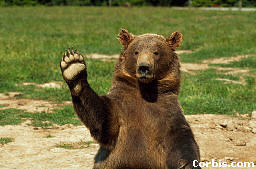
"My name is Griz, and I'll be your tour guide"
I will share with you all about me, my family and where we live. Shall we get started?"
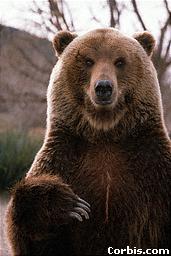

We are a sub species called (Ursus arctos horribilis) from the brown bears that first arrived on this side of the continent 15,000 years ago. We are also called Alaskan brown bears or Kodiak bears.
Our color ranges from light brown (almost blonde) to black. We have a sturdy, stocky build and a noticeable hump behind our head. Our claws are long and curved and can not be retracted.
We get our name from the silver color that the tips of our fur turn as we get older.
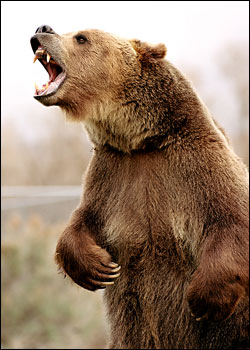
We occasionally stand up on our hind legs. Some folks see this as a threatening gesture, Well it is, so back off!
No, not really, it is so we can get a better idea of our surroundings.
Sadly, like most bears, we have poor eyesight; but our senses of hearing and smell are excellent.
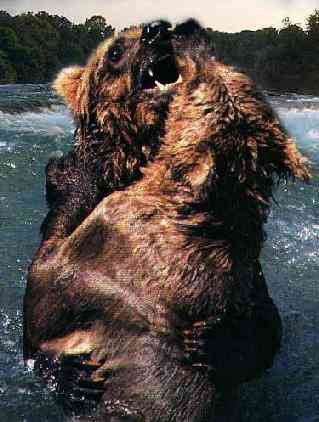
We are a big bunch, our total length can range from 6' to 8' 6", our shoulder height is 3'to 4' and we can weight anywhere from 242 to 1,200 lbs.
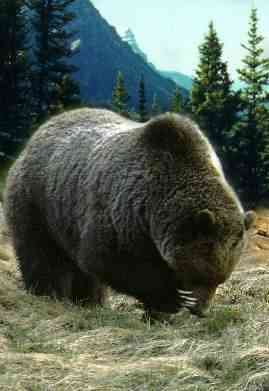
We are primarily solitary. We will congregate as breeding pairs for a short time, a mother and her cubs will stay together for the first 2 to 3 years of their lives, and occasionally in sibling groups after they leave their mother.
We have a home range that is anywhere from 50 to 500 miles depending on our gender.
These ranges are not territories however since there is no attempt to chase the other bears out.

We are found in river valleys, mountain forests, and open meadows all over the world.
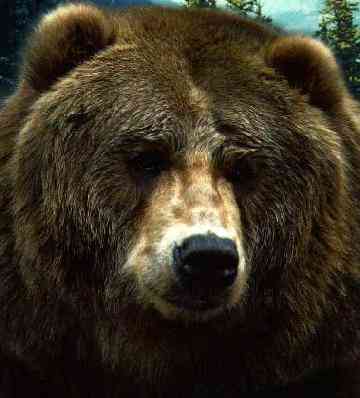
We are in North America, Western and Central Europe, some parts of Japan, and Russia and can be found as far north as the tundra region.

We are technically omnivorous {meaning eating both animal and plant foods}.
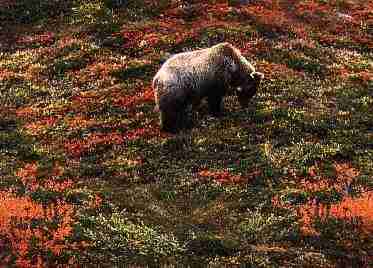
We do eat meat and are capable of killing cattle and are excellent at fishing.
However, most of our diet (60 - 90 percent based on location) is made up of grasses, tubers, roots, berries, and insects.

The meats we eat include ground squirrels, marmots and mice which we can dig up. We will also feed on carrion if the opportunity arises.

We mostly build our dens on the north and east side of the mountains, where snow melt does not start until late April or early may, the den could be a cave or a deep hollowed hole dug into a tree root.
We enter the den in late October or November, just before the heavy snow arrives this way their tracks are covered.
We fall asleep, and we will not eat or drink for six months.
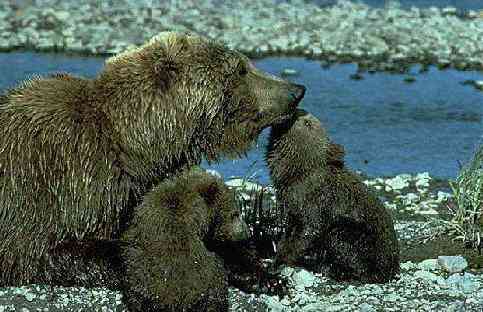
Our cubs are born near the end of the hibernation period and weigh about a pound.
They gain weight quickly and will often weigh around 20 pounds when they leave the den.
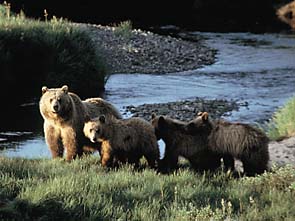
They are dependent on their mother's milk for the first year and will stay with her until they are 3 years old.
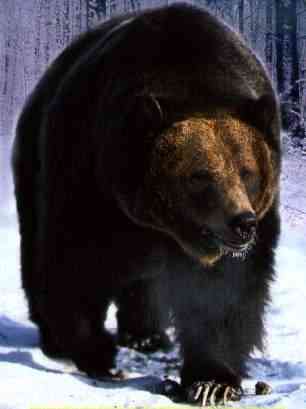

Would you like to hear me speak?
Just click on my picture below.
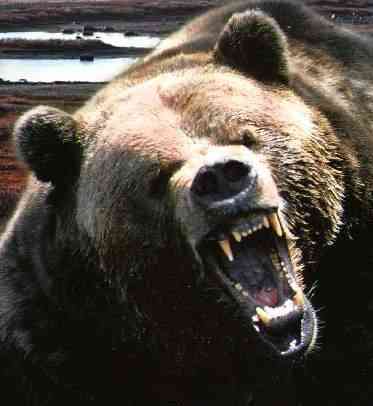

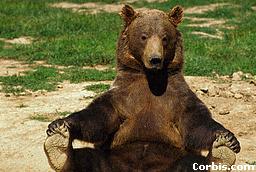
I may be big, but I can still touch my toes!

"Well I guess that's about it from here, I'm so glad you stayed to learn about me and my family.
Sadly we are now Endangered. Our biggest threat is loss of our habitat.
Please do all you can to protect our habitat so we can stay around for a long time.
Thank you!!"
Please visit this site below, you can make a huge difference and help save us!!


 "Sunrise"
"Sunrise"Midi "Sunrise" is
used with artists permission
and is copyright © 2000 Bruce DeBoer


Home Table of Contents Carousels Carousels II
Tigers Are Beautiful! Colors of the Tiger Tiger Talk POLICE Backgrounds,Gifs,Bars,Logos and Plaques
There Is A Story Behind That Hymn
Wolves In The Wild Wolf Whispers Nursing & Medical Graphics My Favorite Medical Links Black Leopards Library of Favorite Poems
Sweet,Gentle Giraffes Giraffic Park Lighthouses Barns Kiss Me! I'm Irish In Memory Of A Special Friend Gifs,Backgrounds,Bars,Midis & Tools Cards and Fun Stuff The Blue and the Gray What's Cookin'? PATRIOTIC Backgrounds,Gifs,Bars,Logos and Plaques Friends Links Banner Exchange My Page Banners My Awards
Sign and Read My Guestbook Email me!

Thank you to Animal Trails for many of these beautiful Grizzly photos!


